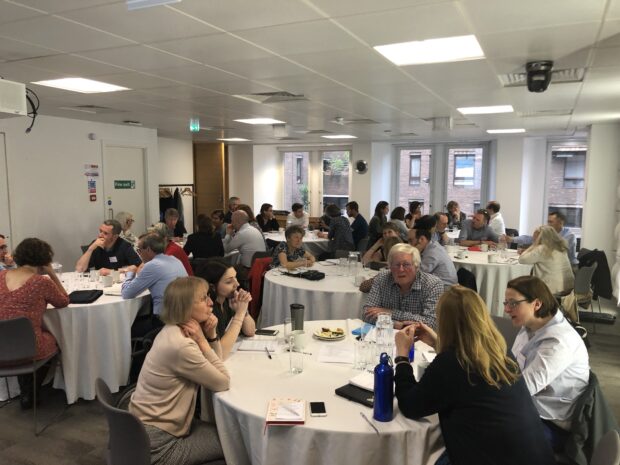
What quality looks like in making offers for population-based screening is an important question, given that we know screening brings potential harms as well as benefits. So I was delighted to be able to bring together a varied group to discuss this very question at an interactive workshop organised as part of my Health Foundation Improvement Science Fellowship.
Broad discussions
The focus for the workshop was what quality looks like in making offers for population-based screening. Those present included:
- patient representatives
- healthcare policymakers
- healthcare professionals
- academic researchers
I kept the session broad as one of the things I wanted to think about was whether quality might look different for particular types of screening.
Thought-provoking speakers
The workshop was organised as 3 pairs of short, sharp presentations — each followed by table discussions. I was delighted to be joined by Bob Steele, chair of the UK National Screening Committee (UK NSC), who kindly helped introduce and conclude the workshop with me.
Sian Taylor-Phillips, of the University of Warwick, and Dougal Hargreaves, Imperial College London, kicked us off, speaking about how we can choose the best test to offer people and how we might think about what quality looks like.
Next up was Nick Johnstone-Waddell, from Public Health England (PHE), who talked about PHE's work on producing accessible information about screening for a diverse range of audiences. Christian Von Wagner from University College London (UCL) then looked at inequalities in cancer screening uptake how participation can be encouraged. Lots of interesting issues here, not least the tricky question of when facilitating and encouraging participation might slip into coercion.
The final presentations both came from researchers at the University of Warwick. Felicity Boardman considered the quality of information about screened for conditions, in particular the differences between medical descriptions and lived realities. Aileen Clarke picked up the tensions between supporting individual decision-making about screening and achieving high uptake — can we have a key performance indicator for informed choice?
Key issues
I was able to sit quietly and listen to groups as they fed back. There were a few big issues and questions raised that made me think.
What does quality look like?
Is it how many people take up the offer of screening? Or is it something slightly different, like whether people feel they’ve made a good decision about whether to take part? Is quality any one thing, or is it a combination of factors?
Depending on what we think quality looks like, how can we measure it at a health system level?
Uptake is relatively easy to measure. Assessing the quality of decision-making by people is much more challenging. There can be a tendency to assume there’s a fairly stable body of knowledge about screening that simply needs to be made accessible and understandable in order to inform people’s decision-making. How do we generate and agree the knowledge that forms the basis of the information given to people?
Is variation in screening uptake inherently a problem?
How do we distinguish between non-participation as a problem that needs tackling and that which represents an informed decision to decline the invitation made?
Next steps
It was a thought-provoking workshop, and my sincere thanks to all those who took part.
In addition to writing this blog post, I will be following up on discussions with participants about writing papers on some of the issues raised and developing research applications to take this work forward.
PHE Screening blogs
PHE Screening blogs provide up to date news from all NHS screening programmes. You can register to receive updates direct to your inbox, so there’s no need to keep checking for new blogs. If you have any questions about this blog article, or about population screening in England, please contact the PHE screening helpdesk.
3 comments
Comment by Irene Stratton posted on
Dear Phil,
David Spiegelhalter has written about false negatives and positives.
There are problems in explaining these concepts when the general level of numeracy is low in the adult population but maybe using graphics such as the one David presents here might help?
https://understandinguncertainty.org/visualisation-information-nhs-breast-cancer-screening-leaflet
Irene
Comment by Phil Bullock posted on
It looks like an interesting day.
Was there any discussion with regard to the limitations of screening - false negatives and positives - and how we might educate the public in this area?
At the moment it feels like they feel their only recourse is to legal redress when programmes suffer an entirely foreseeable but unpredictable issue of this nature.
Comment by Natalie Armstrong posted on
Dear Phil,
Thanks for your comment. It was indeed an extremely interesting and useful day. The relative benefits and harms of screening was certainly something which we talked about, among many other things.
All the best,
Natalie